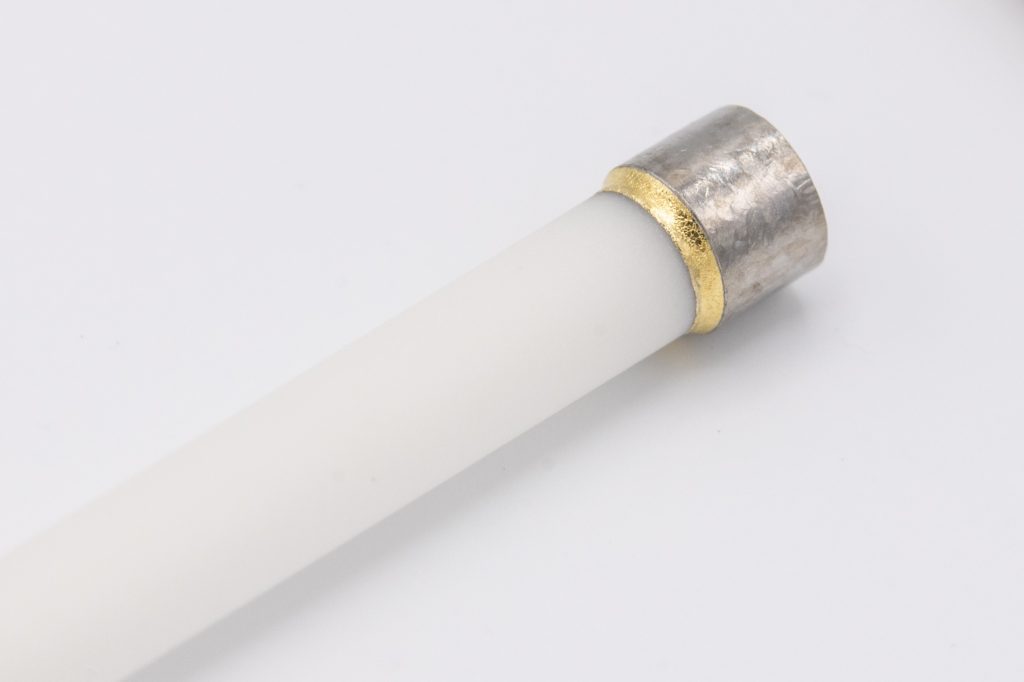High-performing technical ceramics
New technological advances lead to increasing demands for more efficient ceramics with higher performance levels. For over 100 years, SCT’s commitment to quality has been rooted in the ceramics materials we develop and use. We use proven manufacturing processes to develop our own advanced ceramic formula, ALUCER®. Our proprietary ceramic consistently produces some of the most high-performing, brazed assemblies within the technical ceramics industry.
Introduction to brazing ceramic to metal
Technical ceramics (or advanced ceramics) are engineered materials that possess exceptional mechanical, electrical and thermal properties. Technical ceramics are an ideal solution where higher strength, lighter materials and longer product lifespans are required. The formulas can be customized to increase a product’s performance in a wide range of applications and extreme conditions. Throughout the years, SCT has developed over 100 different formulations of our alumina ceramic ALUCER® to meet the demands of the high-reliability markets we serve.
SCT has perfected the art of joining ceramic to metal, in a process known as brazing. Brazing produces a hermetic seal between the ceramic and the metal sub-components, a major criterion for assemblies operating in extreme environments. SCT’s brazing occurs at temperatures capable of reaching up to 1,600°C (2,912°F).
Due to their many technical advantages, advanced ceramics are often used in lieu of competing materials, such as glass or plastic. Benefits include:
- Hardness and wear resistance
- Low Density
- Electrical Resistance (Insulation)
- Mechanical Resistance
- Corrosion Resistance
- Biocompatibility
- Ultra High Temperature Threshold
- Ultra high vacuum compatible (No degassing)
- Precision (miniaturisation)
Our Ceramics Used in Brazing
Alumina
Alumina is the most widely used technical ceramic. Its properties make it a very good candidate for many ceramic-to-metal assembly applications such as high voltage feedthroughs, aeronautical sensors, high power feedthroughs and biocompatible, hermetic feedthroughs.
Medical application
Alumina 99.7% (Al2O3)
Biocompatible proprietary formula.
Used primarily for feedthroughs and casings in Active Implantable Medical Devices (AIMDS) for markets such as cardiac, cochlear and neurostimulation.
Industrial application
Alumina 97% (Al203)
Proprietary formula produced on-site to stringent quality standards.
Posseses excellent dielectric strength.
Option to include glaze on the surface in order to reduce contamination and facilitate cleaning.
Used for applications in markets operating in extreme conditions such as aerospace, energy and electron tubes.
Zirconia
Zirconia is a ceramic option for applications requiring super-miniaturization or high degrees of impact resistance.
Sapphire (Single cristal Al2O3)
Used in applications requiring optically transparent materials
Ruby (chromium doped aluminium oxide)
Used as an alternative ceramic for super-miniaturized feedthroughs
Custom materials can be developed to meet specific requirements
Metals Used in Brazing
Our choice of metals plays an important role in the ceramic-to-metal brazing process. Our metal options include :
- Kovar (DP1) and FeNi42
Used for its expansion identical to ceramic - Titanium and titanium alloys (TiGr2, TiGr5)
Used for implantable and aerospace applications - 304L and 316L
- Alumel and Chromel
Used for type K thermocouple - Cu-OFE and Molybdenum
Used for power connection pins - Platinum (Pt), palladium (Pd) and niobium (Nb) alloys
Used for implantable pins
Contact us to learn about our brazed ceramic-to-metal assemblies.




